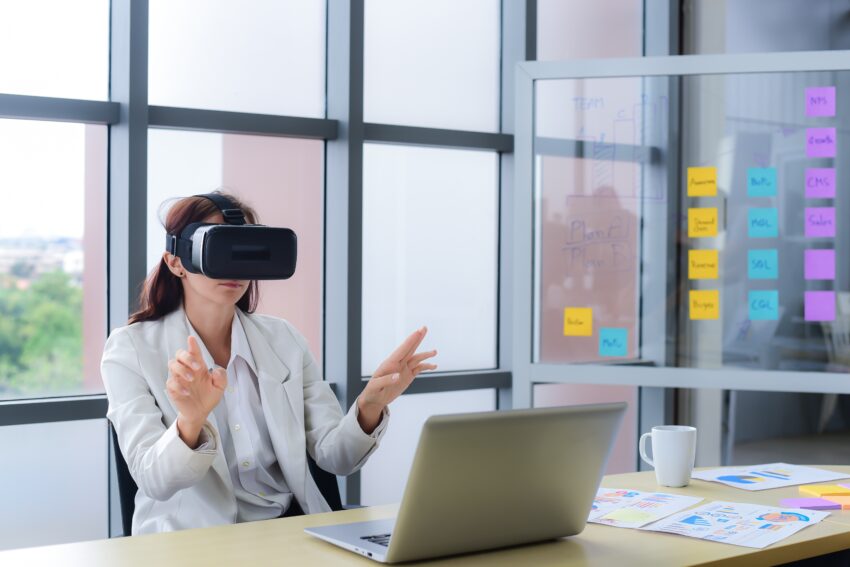In the beginning there was Web 1.0 (web browsers with pictures, colours, audio and eventually video), and then Web 2.0 or the social element of the web (social networks, for instance), and now Web 3.0 is emerging as a new form, where AI and Blockchain can cut out intermediaries and make information and services more readily available, more private, and potentially more secure.
Dario Betti at The Mobile Ecosystem Forum explains that the Metaverse—a virtual digital world where interconnected platforms replicate and improve real life experiences or create new digital and hybrid services—fits here as it will be a contemporary of the Web 3.0 – it refers to the user experience rather than a grander role in society or technology.
Imagine moving from the two-dimensional experience of a web browser screen to a three-dimensional virtual world where people, businesses, services can create a new presence or identity. You—technically, your ‘avatar’—would move across the different shops, offices, theatres, meeting places in the Metaverse. The avatar will be able to talk with others, listen to concerts, buy items, conduct meetings and work, all without the need to be physically anywhere in particular. A lot of this is available today as virtual services without the new 3D interface (web conferences, video channels, e-commerce site).
It should also be noted that many of these three-dimensional worlds already exist in the form of games: Second Life, Minecraft, and Roblox are good examples of virtual games turned into virtual worlds.
How would you navigate in this new world? Possibly by voice assistants (rather than URL addresses) and using Virtual Reality headsets or Augmented Reality interfaces (that will superimpose virtual objects on a smartphone screen pointing at the area next to you.
In the future, rather than VR headsets people might be able to see holograms in front of them, and thanks to Web 3.0 the elements of digital currency (blockchain) and AI assistants will help navigation.
The Big Boys
Look at what other big players are doing, and it shows that the Metaverse is a big thing. Facebook has changed its corporate name in honour of the new trend. Microsoft’s CEO acknowledged that their latest and largest acquisition (the game maker Activision Blizzard for $68.7 billion) was a side bet in games but also a bigger step towards the Metaverse, and the next Internet.
The history of these two companies shows something: they were slow to adapt to new technologies. And now they do not seem to want to miss the next evolution. Microsoft underplayed the Internet at first and had to manage an expensive (and very successful) turnround. Facebook was also too slow to pick up the mobile internet, and it had to acquire emerging competitors such as WhatsApp and Instagram that were threatening to eclipse the social network via their mobile apps. Facebook is looking for a new growth story too, as its core business enters a level of maturity (user acquisition and usage in the social network is flattening). Both companies seem to have learnt the lessons, and do not what to miss the boat on this particular evolution of the Internet.
The list of companies offering a flavour of the Metaverse is growing. Google is working on a Metaverse updated version of its interactive glasses. Epic Games has raised $1bn to support their internal development of a Metaverse.
Where we are
We do not have a ‘Metaverse’ yet, but many companies seem to love its potential and are happy to join in. The real innovation will arrive when, either a platform becomes dominant, or when a global virtual standard will take place. Neither seems to be close.
Navigating the Metaverse today is a traditional experience. To enter Nike’s ‘Metaverse’ experience in Roblox you need to download the Roblox app, search for Nike (by typing) and then clicking on a 2D picture of Nike showing in the results. After that you will be able to play a basketball game against other real players. There are still a lot of old-fashioned web/app interactions in the early Metaverse experiences. New models and interface modes are needed to bring a new fresh experience. Otherwise, the Metaverse will die after a short gimmick-laden life.
Conclusion
So, while the Metaverse future isn’t here just yet, a new wave of usability improvements is coming, which will change the way we experience the Internet. These might not replace the web as we know it, but they will complement and expand it. We have time to understand, plan, test and deliver a new experience.


